Why We Cannot Offer These Food Items
Florida Law mandates what we cannot offer. The Cottage Food Products that we cannot offer under the Florida Law, House Bill 7209 guidelines for a Cottage Food Operation are listed below.
These mandates were established for the purpose of food safety. These items are considered potentially hazardous and shall not be produced by a Cottage Foods Operation.
- JERKY. Fresh or dried meat or meat products including jerky
- CHUTNEY. Canned fruits and vegetables, chutneys, vegetable butters and jellies, flavored oils, hummus, garlic dip, salsas etc.
- FISH. Fish or shellfish products
- CANNING & PICKLING. Canned pickled products such as corn relish, pickles, sauerkraut
- RAW SPROUTS. Raw seed sprouts
- BAKERY WITH DAIRY. Bakery goods which require any type of refrigeration such as cream, custard or meringue pies and cakes or pastries with cream cheese icings or fillings
- DAIRY PRODUCTS. Milk and dairy products including hard, soft and cottage cheeses and yogurt
- FRUITS & VEGGIES – FRESH. – Cut fresh fruits and/or vegetables. Juices made from fresh fruits or vegetables
- ICE. Ice and/or ice products
- SAUCES. Barbeque sauces, ketchups and/or mustards
- BREADS WITH TOPPING. Foccaccia-style breads with vegetables and/or cheeses
While you may want us to produce something in these categories, we cannot offer any Cottage Food Products in this category as it violates our stance as a Cottage Foods Operation under Florida Law.
We thank you for your understanding.
Thoughts On The No-Go Food Items
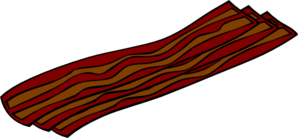 JERKY. Jerky can be a tricky item, because it’s a wet item and it’s prone to bacterial spoilage.
JERKY. Jerky can be a tricky item, because it’s a wet item and it’s prone to bacterial spoilage.
Also, it has to be prepared properly before it undergoes the dehydration process. A commercial kitchen is better suited to producing jerky, when it comes to public food safety.
Jerky made at home is every bit as good as commercially produced jerky, however when you make it at home, you are responsible for the adherence to food safety and food production protocols.
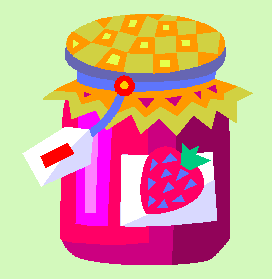 CHUTNEY. Chutneys are typically chunkier sauces and they are wet, therefore prone to bacterial invasion.
CHUTNEY. Chutneys are typically chunkier sauces and they are wet, therefore prone to bacterial invasion.
If wet canning such an item, the process must be precisely adhered to, so as to prevent contamination and bacterial growth.
Home canners do it all the time, but, here’s an item, due to its risk factor, when considering public health safety, that is better left to commercial kitchens. It’s a risk factor the state wishes to avoid.
The following commentary applies to the ‘CHUTNEY’ category and the ‘CANNED & PICKLED’ category.
Note that ‘home canning’, ‘wet canning’, ‘high-heat canning’, or ‘water bath canning’, all refer to the same process. Many people refer to it, simply as ‘canning’.
The process is done through immersion in extremely hot, boiling water, and to ensure food safety, exact temperature protocols must be adhered to during the use of this food preservation method.
The product must be cooked sufficiently and acid levels present within the food product must be monitored closely to prevent bacterial growth after the ‘can’ has been sealed.
Due to the complexity of this food preparation process, and the potential for bacterial growth, it is not an approved food item for a Cottage Food Operation.
Many of us engage in home canning, or ‘wet canning’, however the difference is that we assume the risk when producing a potentially hazardous food item.
FISH. Well, that one’s really easy, fish just spoils fassssst. Even fresh fish, in the refrigerator is a done deal in less than three days, and that’s in the frig.
Here again, it’s an item not suited to a small non-commercial kitchen, when considering distribution, logistics, and food safety.
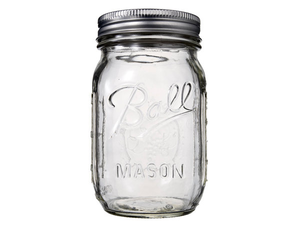 CANNING & PICKLING. Canning has been a food preservation method for over 200 hundred years now.
CANNING & PICKLING. Canning has been a food preservation method for over 200 hundred years now.
And pickling has been around for over 4,000 years. As early as 2030 B.C., in the southern Asia, ancient Indians were pickling cucumbers.
As for canning, it all kicked off in the year 1810, due to the French military having offered a prize, in 1795, for anyone who could come up with a better food preservation method. And the prize went to one Nicholas Appert, a confectioner, interestingly enough, who won that prize in 1810.
Content below this line is repeated from the ‘CHUTNEY’ category.
The following commentary applies to the ‘CHUTNEY’ category and the ‘CANNED & PICKLED’ category.
Note that ‘home canning’, ‘wet canning’, ‘high-heat canning’, or ‘water bath canning’, all refer to the same process. Many people refer to it, simply as ‘canning’.
The process is done through immersion in extremely hot, boiling water, and to ensure food safety, exact temperature protocols must be adhered to during the use of this food preservation method.
The product must be cooked sufficiently and acid levels present within the food product must be monitored closely to prevent bacterial growth after the ‘can’ has been sealed.
Due to the complexity of this food preparation process, and the potential for spoilage, it is not an approved food item for a Cottage Food Operation.
Many of us engage in home canning, or ‘wet canning’, however the difference is that we assume the risk when producing a potentially hazardous food item.
RAW SPROUTS. This item easily spoils when not refrigerated, and when not produced within very strict guidelines.
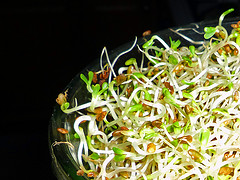 If you have ever used a sprouter on a kitchen countertop you know how delicate your sprouts are when just beginning to germinate in the moist, wet environment, which they require.
If you have ever used a sprouter on a kitchen countertop you know how delicate your sprouts are when just beginning to germinate in the moist, wet environment, which they require.
Because of this environment, people who sprout in a sprouter device often use food grade hydrogen peroxide to contain the incidence of bacterial spoilage during the early phase of the germination process.
We repeat, again, this is a very bacteria-prone environment. So, this item carries the ‘potentially hazardous’ tag and it is not suited to a Cottage Food Operation, with good reason.
We can, however, tell you how to set yourself up with a sprouting system at home!
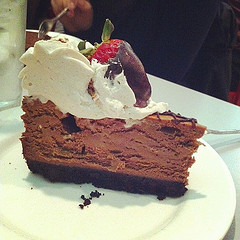 BAKERY GOODS WITH DAIRY. Glorious cheese, and cream, and cheesecake, ahmmm, yes, well, cheese, especially in a cheesecake is prone to spoilage without refrigeration.
BAKERY GOODS WITH DAIRY. Glorious cheese, and cream, and cheesecake, ahmmm, yes, well, cheese, especially in a cheesecake is prone to spoilage without refrigeration.
Though the cheese in a cheesecake will have been cooked, true, the cooking process has also voided its natural pro-biotic bacterial load, and in addition to that, cheesecake normally has lots of sugar present to feed the bad bacteria, and a cheesecake is still considered wet, after cooking, a great environment for bacteria.
So while we love cheesecake, and we own many springform baking pans, in various sizes, we understand completely, the reasons why these types of cheese-laden food items are omitted from the allowable Cottage Food Products list.
 FRUITS & VEGGIES – FRESH. This is a matter of proper food handling and the potential for rapid spoilage and bacterial invasion.
FRUITS & VEGGIES – FRESH. This is a matter of proper food handling and the potential for rapid spoilage and bacterial invasion.
This item is easy enough to make and prepare, true, but it’s the handling and refrigeration after the food processing has occurred that carries the food safety risk. And therein lies the reason this item is not on the allowable foods list.
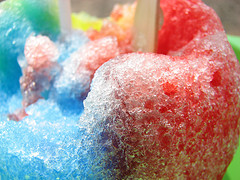 ICE. Seems like it’s not a big deal to offer ice products, but wait just a minute! Ice is water, water is generally speaking a solvent, water permeates everything it comes in contact with and water is extremely receptive to anything that is introduced into it, like you know what, bacteria.
ICE. Seems like it’s not a big deal to offer ice products, but wait just a minute! Ice is water, water is generally speaking a solvent, water permeates everything it comes in contact with and water is extremely receptive to anything that is introduced into it, like you know what, bacteria.
Strict protocols, food safety, food handling guidelines, and commercial refrigeration equipment are required when handling ice and ice products, which are best left to commercially licensed kitchens and food vendors. Nothing is stopping anyone from going into a business that provides these items, but they just are not suited to a small Cottage Food Operation.
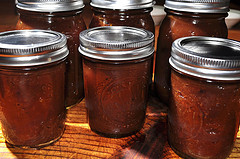 SAUCES. By now you are beginning to understand that a ‘wet’ environment sets the stage for food contamination. This is why sauces which seem like a great idea for a Cottage Food Operation, are not.
SAUCES. By now you are beginning to understand that a ‘wet’ environment sets the stage for food contamination. This is why sauces which seem like a great idea for a Cottage Food Operation, are not.
When processing and then packaging a sauce product, even though it may have vinegar in the ingredients list, which is an acid, which does retard bacterial growth, this product must still adhere to strict temperature controls during the cooking process, and subsequently the packaging process. So, this one is a no-go for the Cottage Food Operation, at least in Florida!
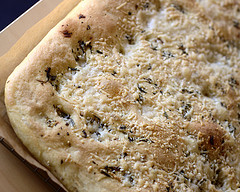 BREADS WITH TOPPING. Bread, it’s in the baked goods category right? Yes it is, but, when you introduce the ‘wet’ stuff, cheese, you introduce bacterial spoilage potential!
BREADS WITH TOPPING. Bread, it’s in the baked goods category right? Yes it is, but, when you introduce the ‘wet’ stuff, cheese, you introduce bacterial spoilage potential!
More cheese please! Love that cheese, but without a food delivery system that ensures the product is produced and then offered for consumption within designated time frames, it becomes a potentially hazardous food. The bread is fine, but the presence of cheese creates the food risk.
Next, you are thinking that veggies would be okay? Right? No, they are not … why? Well, veggies are low in acid content. When there is low acidity, there is greater potential for bacterial invasion. The acidic environment is what kills bacterial growth and veggies are notoriously low on the pH scale.
In this case, it comes right back to the food delivery system and the time-frames within which a food is prepared and then consumed. Fresh toppings like cheese and veggies are not ‘shelf-stable’ so to speak, so they become a potentially hazardous food item, and they cannot be offered by a cottage food operation.
……………
IMAGE CREDITS:
1. JERKY STRIPS ~ By KWade ~ http://www.clker.com/clipart-bacon.html ~ CC0 1.0
2. CHUTNEY ~ By MS Office ~ http://office.microsoft.com/en-us/images/results.aspx?qu=jar&ex=1#ai:MC900287189| ~ Free -License Unknown
3. FISH ~ By MS Office ~ http://office.microsoft.com/en-us/images/results.aspx?qu=fish&ex=1#ai:MP900405246| ~ Free-License Unknown
4. BALL MASON JAR ~ By Laura ~ http://www.clker.com/clipart-245091.html ~ CC0 1.0
5. SPROUTS ~ By Jessica Reeder ~ http://www.flickr.com/photos/jessicareeder/3862625248/sizes/o/ ~ CC BY-2.0
5. DARK CHOCOLATE CHEESECAKE ~ By Anasara Rojas ~ http://www.flickr.com/photos/anasararojas/8013864954/sizes/o/ ~ CC BY-SA 2.0
6. FRESH CUT FRUITS & VEGGIES ~ By Peggy Greb ~ http://commons.wikimedia.org/wiki/File:Fresh_cut_fruits_and_vegetables.jpg ~ http://www.public-domain-image.com/full-image/flora-plants-public-domain-images-pictures/vegetables-public-domain-images-pictures/fresh-cut-fruits-and-vegetables.jpg.html ~ Public Domain
7. SHAVED ICE ~ By FrontRiver ~ http://www.flickr.com/photos/greensurvey/2997978044/sizes/l/ ~ CC BY-2.0
8. SAUCE IN BALL MASON JARS ~ By JeffreyW ~ http://www.flickr.com/photos/jeffreyww/4994193129/sizes/l/ ~ CC BY-2.0
9. CHEESE FOCACIA BREAD ~ By McCun934 ~ http://www.flickr.com/photos/mccun934/4899083686/sizes/l/ ~ CC BY-2.0
10. YUMMY ICON SET ~ By Icon Eden ~ http://www.iconeden.com/icon/yummy-free-icons.html ~ Attribution Required

